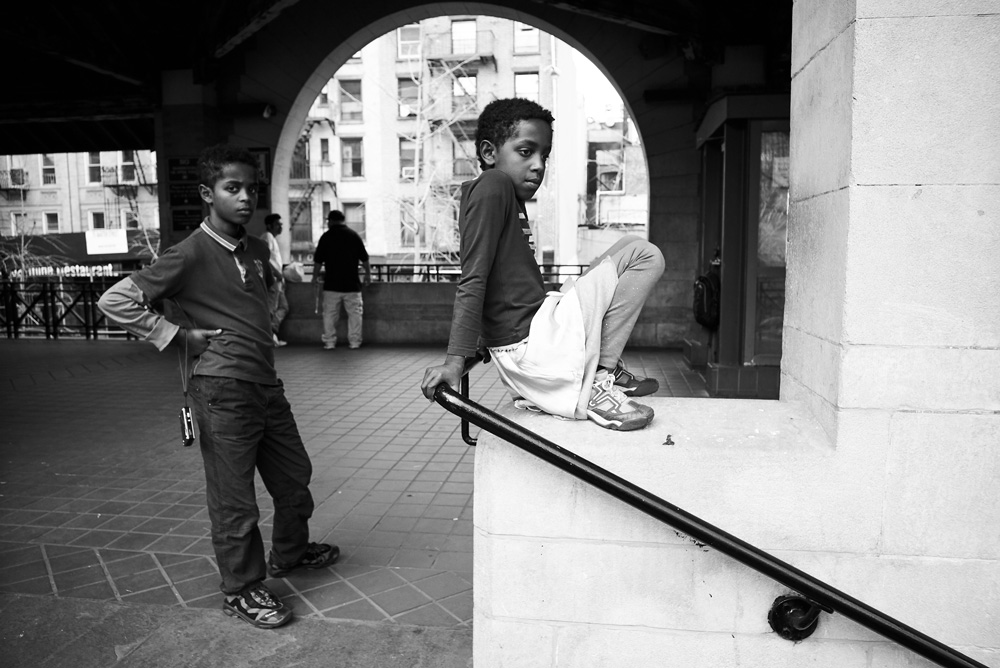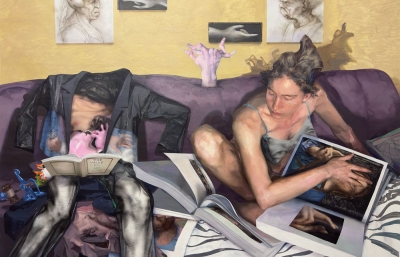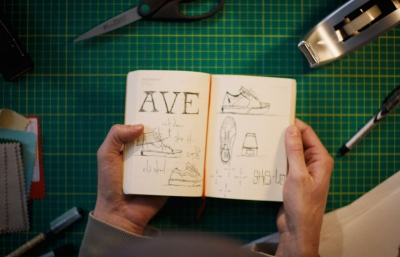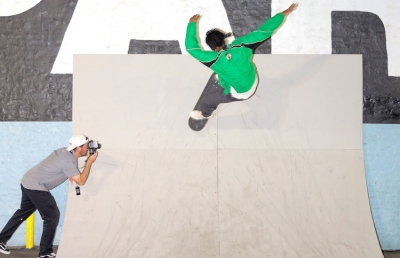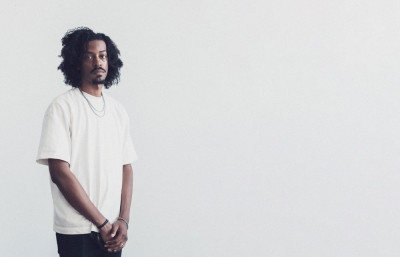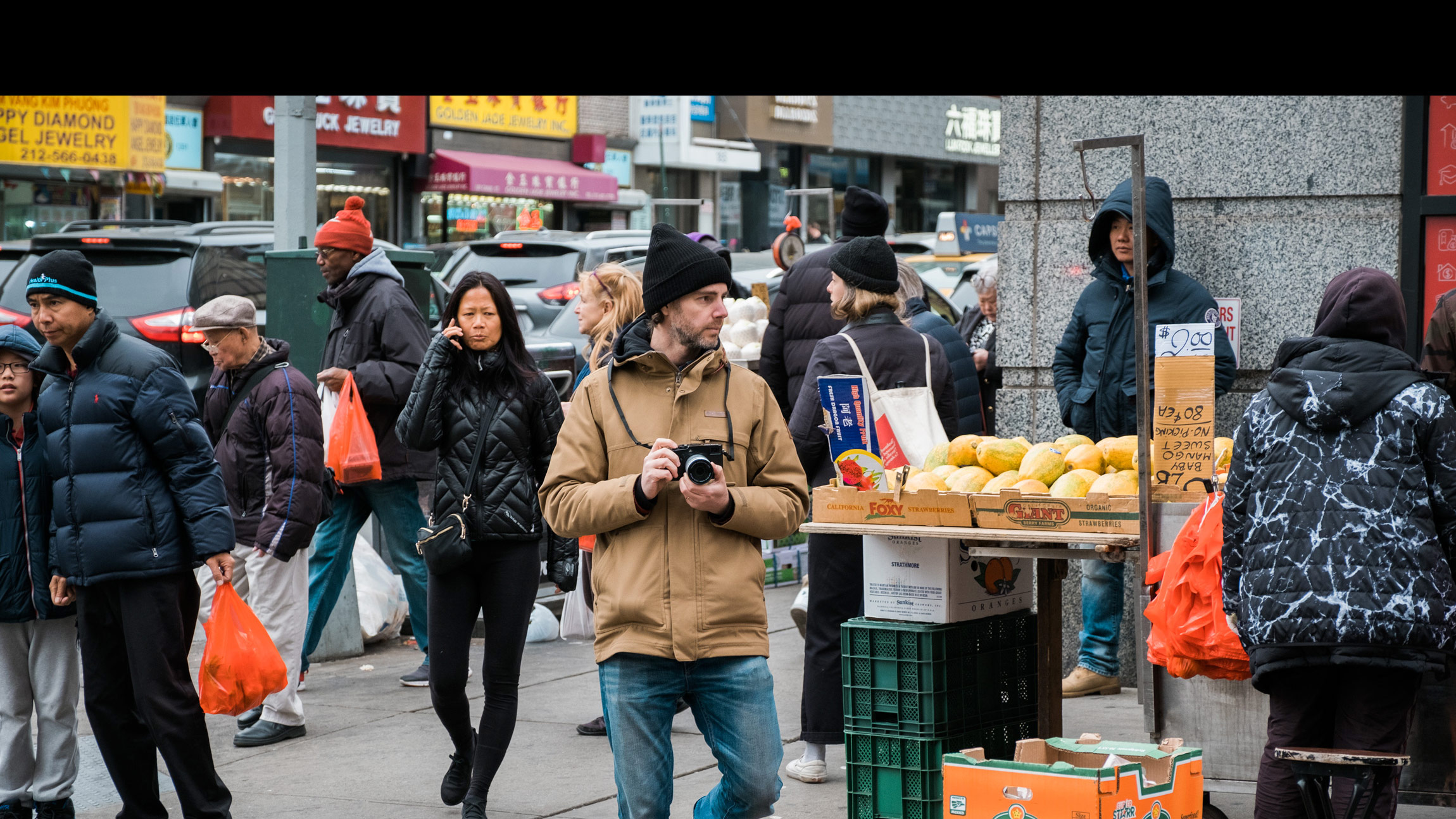
Vision Walk: NYC
With Jonathan Mehring
For the next month we will be traveling around the country with VANS VISION WALKS, a series of workshops led by some of our favorite photographers in their home cities. This past weekend we kicked off the series by spending the day with JONATHAN MEHRING as he led participants on a walk through New York's Chinatown.
Jonathan Mehring is an award-winning photographer who got his start shooting for our sister publications SLAP and Thrasher. From epic motorbike trips across Vietnam, to voyages up the Amazon, he has gone on to photograph skateboarding in every corner of the world. A collection of his photos can be found in his book, Skate the World: Photographing One World of Skateboarding. Traveling inspired Jonathan to begin shooting not just skating, but the cities and towns he was visiting as well. This in turn lead to a fascination with street photography that he continues to pursue at home in New York. "I just kind of see where the city takes me," he explains. "It's almost like a meditative practice. I'm out experiencing life as it passes me by." For an afternoon, Jonathan Mehring gave us some insight into his practice and some tips and tricks for shooting both skateboarding and the crowded, bustling streets, parks, and alleyways of Chinatown.
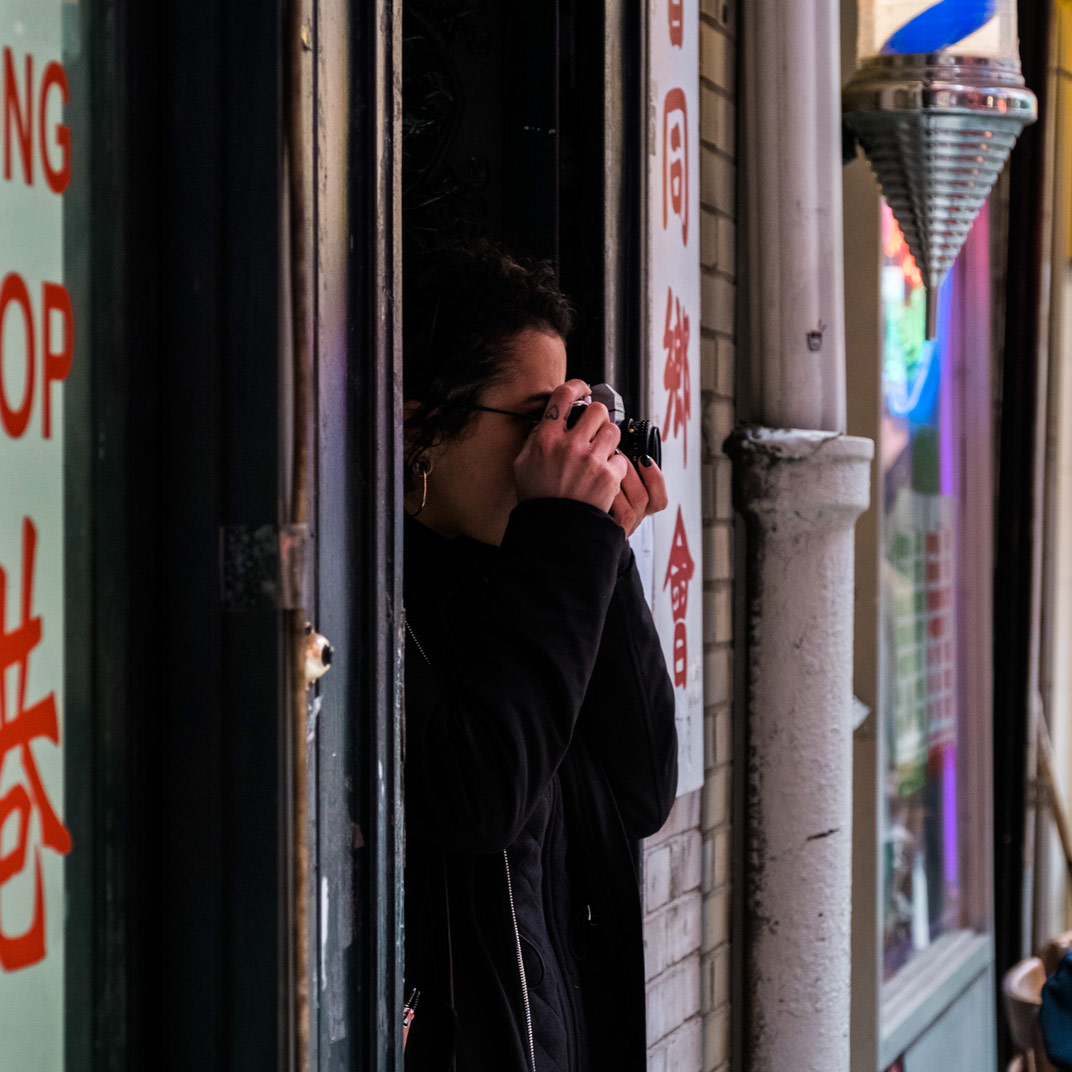
Juxtapoz: When did you first become interested in photography?
Jonathan Mehring: I took a photo class in high school in probably the tenth or eleventh grade and the teacher was pretty awesome, one of the only cool teachers that I had at the time. I just seemed to have some kind of natural talent for it so I went all in. I really hadn't found anything in school that I liked up to that point. I was just a skate rat and getting C's and not really doing anything. All of a sudden, I found this class and was showing up an hour early for school and staying an hour late to print in the darkroom. So I fully went for it, I just fell in love with it from the get go. Then I started shooting my friends skating. It was what I was doing all the time anyway so it was natural. I got into the artistic side of it too, like the assignments we'd get in class and got super into printing and developing film in weird alternative processes.
What did you do after high school?
I decided to go to college for photography at VCU in Richmond, Virginia. I wasn't even sure if I would go to college before that. But once I found photography, I was like, "Oh yeah, I'm gonna do this."
"If the photo makes you feel something that makes you take a second look, that's really a major thing. It could be a really dynamic composition or it could be a crazy thing happening in the photo, or a combination. If you can get good light, amazing composition, and something crazy or unusual happening, that is gold, then you're really gonna feel something."
And you continued to shoot skating in college?
It's funny actually, I was shooting skating the whole time but the photo program at VCU was in its infancy and my college professors were like wedding photographers, at best. Not to say that that's a negative thing, because there's some badass wedding photographers out there, but they wanted students to pursue the fine art path and none of the professors had actually done that. The photographers that we learned about were very limited. There was a couple of teachers that were exceptional though and so I really gravitated toward them and learned a lot more from probably three people over the course of four years of going there. It was super valuable in that respect.
After that experience, what advice would you give someone who is trying to pursue photography?
What I was getting at with the school stuff was that I had teachers literally saying, "Don't follow skating. This is a waste of time. Do other stuff." So I just did skating on the weekends and wouldn't even really show that work in class. Most of the time I would be shooting it and sending it to magazines. You just gotta shoot what you love shooting. You gotta go for it and put your work out there, get it in front of people. You really just have to do what you want to do because if you're not doing that... To me photography goes hand in hand with your passion. I can't tell you the number of shoots I've done over the years where I was getting paid nothing or losing money. You shouldn't be doing it if you don't want to be doing it. If you are passionate about it, then it'll work out. That's the biggest thing for sure.
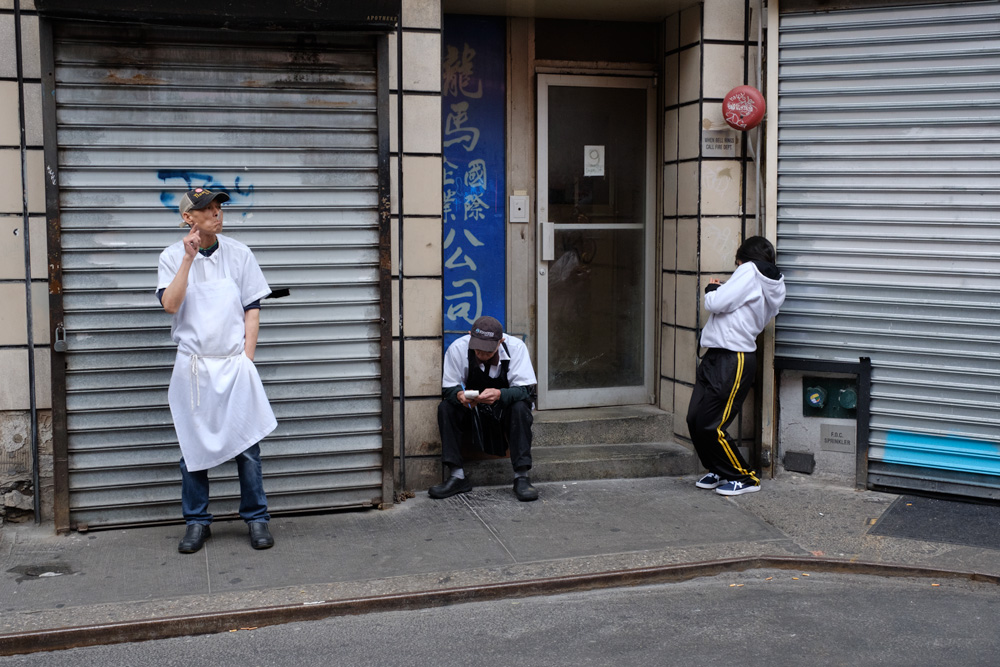
Were the photographers you admired in college involved in the skate world?
There was a guy who I assisted for who was a Vietnam vet and documentary photographer. He was my mentor right out of school. He's this insane dude, awesome, but kind of a maniac. He taught me the documentary approach and then at the same time, I was following the skate magazines and all those photographers. I would try to emulate them enough to be able to get my photos good enough to get in the magazine.
Whenever a demo would come through anywhere between Richmond and DC, I would go and seek out the photographer who was on tour and try to talk to him. Some guys were cool, some guys weren't. Ted Newsome was amazing. Joe Brook was also super supportive. SLAP Magazine published my second photo. My first was in Thrasher, randomly from a contest.
So, it's not just about getting out and shooting, but also seeking out other photographers you look up to.
That's been a big part of it. They say it's all who you know and it really, really is. It's insane. It's all about your connections and your relationships. It’s been a valuable thing to learn over the years.
How does your personal work and professional work differ? What do you shoot just for yourself?
The street photography is personal. I picked that up because I was traveling so much for skating and also living in New York City. Before I moved here, I was strictly shooting tricks and pretty much nothing else, maybe a portrait here and there if I had to. And I got more into that as time went on but I also got more into travel and street photography or street-oriented travel photography. But as far as the street photography I shoot in New York, no one is asking me to do that stuff. It's really a very personal process for me. Sometimes I'm like, "I'm gonna take a day. I'm just gonna go out." A lot of times I'll bring a film camera and I'll just go around and shoot a roll or half a roll, or even three sometimes. I just kind of see where the city takes me. And I don't even know why I do it, it's almost like a meditative practice. I'm out experiencing life as it passes me by. One thing I guess that also got me interested was how skating will take you to weird places in the city you probably wouldn't normally go. I found it fun to have another camera by my side to shoot other stuff happening around a skate session. It's New York, crazy shit happens all the time.
So it was through traveling that you became interested in street photography?
In 2004 I started working for Skateboarder Magazine. I got the travel bug at SLAP because they would send me on tour, most of the time to Barcelona but a few other places too. I got really stoked on traveling and experiencing other cultures. After like the tenth time going to Barcelona, I was like, "Alright. What else is out there?" One thing led to another, and I ended up working for Skateboarder and they gave me a little more control over what kind of travel options I had so I started producing my own trips.
The first one was to Argentina with a random crew of my friends who all rode for different companies. I still don't understand how I got the budget sometimes to do those things. It was on a complete shoestring, but really fun because it was non-objective in that we didn't have a team manager, demos or signings that we had to do. Everyone was there who wanted to rip. We're out there to get tricks, but we're also experiencing a place. That's how I really got into shooting what's happening around us too. We did the Trans-Siberian Railway, which was almost a two-month-long trip from Moscow to Beijing. We went to India and took boats up the Amazon, stopping in urban hubs along the way. I went to Kazakhstan. It was almost like, throw a dart at a map and see, "Alright, what's around here?” It was a little bit risky but we literally never went anywhere that didn't have something to skate.
Has traveling given you a new perspective to shoot your home environment? Do you see things any differently here now that you’ve been all over the world?
I guess, I never really thought of it that way but I'm sure that it does. I think what happened was I got into shooting more than the skating because of traveling. And that got me interested in other kinds of photography, which I then looked up and studied. Then that triggered the inspiration to shoot more around here. So it was kind of what you're saying, but in a roundabout way. I discovered all the Magnum photographers and these people that I wish I would have learned about in school. I was like, "Oh my God, there's this huge world of this artistic photography out there that I never knew anything about! How do I not know this?" That was probably about 10 years ago now.
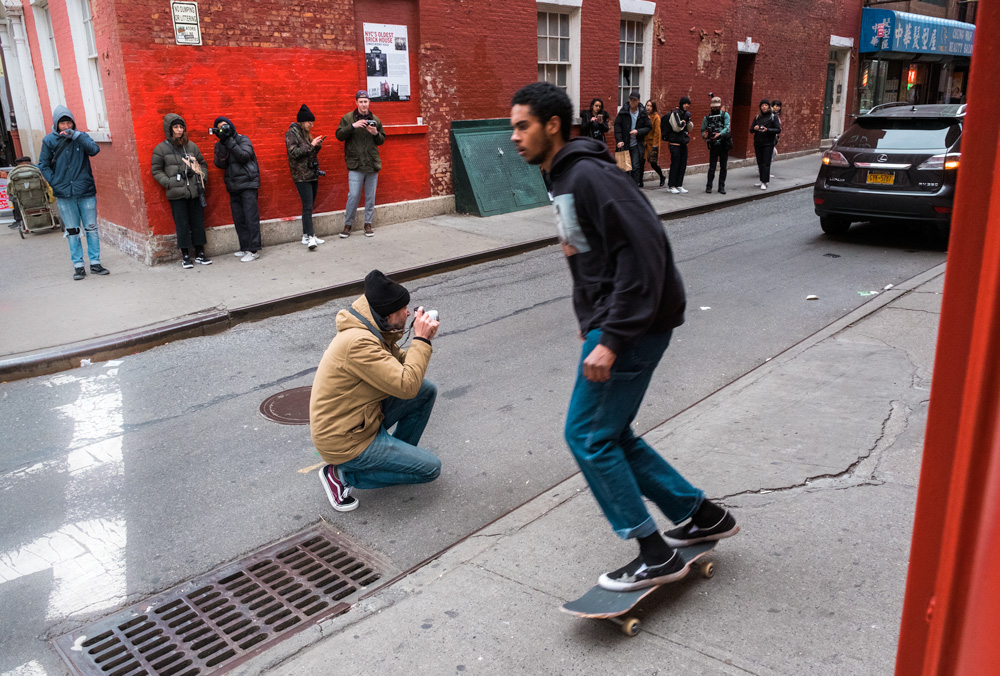
And this was all after you had been working professionally as a photographer?
Yeah, that was almost like this rebirth. It’s like I rediscovered photography at that point. I became super excited about shooting just on the street and it changed my approach to skate photography in the way I would compose things or think about the shot. I got kind of burnt out around that time anyway, when I was like 27 years old. It's like that 27 curse, you know? Just like, what am I doing with my life? But I discovered this other side of photography and it really sparked me again.
Do you collect a lot of photo books?
Yeah, it's almost a problem... I have a pretty massive collection that I'm pretty stoked on. Iif I'm going to spend money on something that I maybe don't need, I'd rather it be some kind of educational thing like that, you know?
What do you do if you’re feeling uninspired or unmotivated?
If I'm really burnt on it, I think I'll just take a break. I'll play music. I'm super into rock climbing now and that's an amazing release. It's similar to bombing a hill on a skateboard, but much slower...
The adrenaline?
It's adrenaline, but it's also like creative thinking. You really have to figure out your balance and the obstacles in front of you. So I could equate it to bombing a hill, definitely. But I'm very uncoordinated, so I like the slowness of the climbing because I can deal. You're not really making split-second decisions as much.
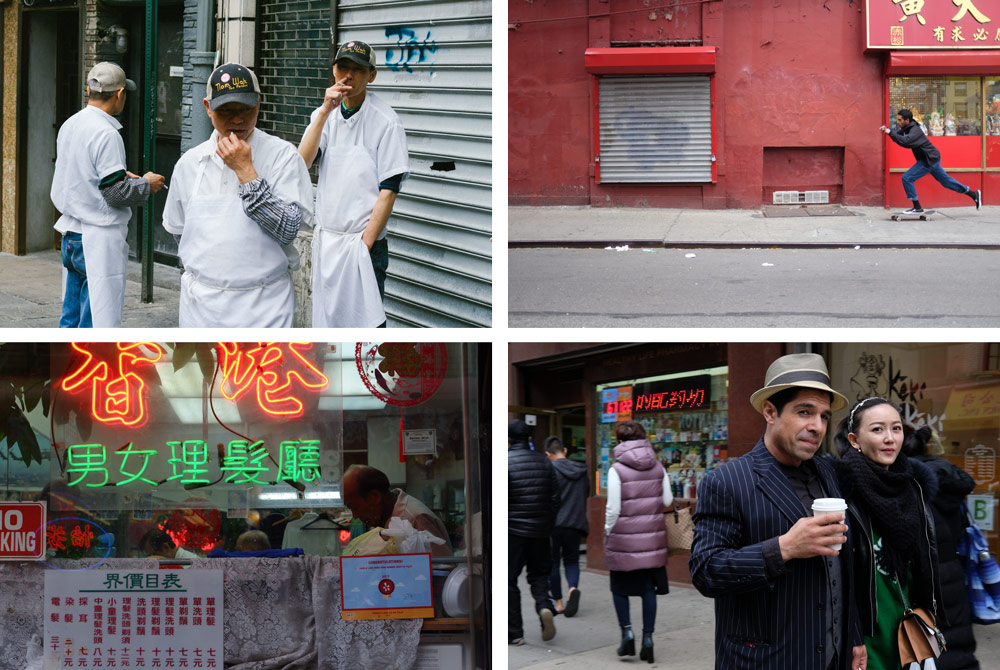
"THE VISION WALK WAS ESSENTIAL BECAUSE I GOT TO SEE HOW JONATHAN MEHRING SHOOTS STREET PHOTOGRAPHY AND SKATEBOARDING. HE GAVE US TIPS AND ENCOURAGED US TO SHOOT CERTAIN SUBJECTS AND LOCATIONS I MAY NOT HAVE SHOT OTHERWISE. CHINATOWN IS AN ICONIC NEIGHBORHOOD WHERE EVERY INCH OF THE STREETS HAS INTRICATE DETAIL, COLOR, AND ACTION, SO IT WAS PERFECT." —ZACH ISAAC
On this walk we are all going to be shooting in the same place at the same time. How do you make your photos stand out and what makes one person's shot unique from another?
What I respond to the most in a photo is the energy of it. And for me, that's what I'm always looking for and that often leads to action-based photography. And street photography is kind of action-based too, at least my stuff is. There are quiet moments, sure, but the ones I really like are the ones where something's really happening. If the photo makes you feel something that makes you take a second look, that's really a major thing. It could be a really dynamic composition or it could be a crazy thing happening in the photo, or a combination. If you can get good light, amazing composition, and something crazy or unusual happening, that is gold, then you're really gonna feel something, you know? So I guess you're always kind of trying to combine all of those things together. For me, that's what makes the most successful shots.

